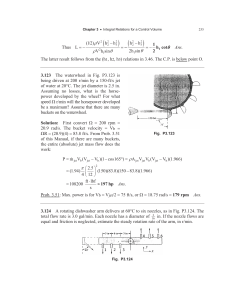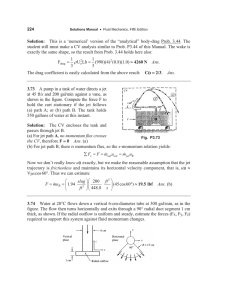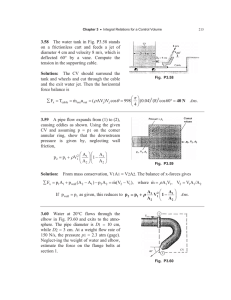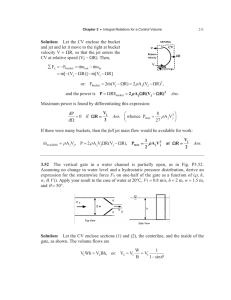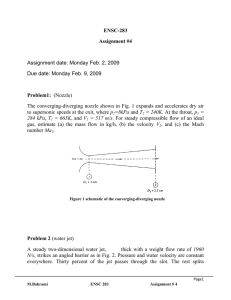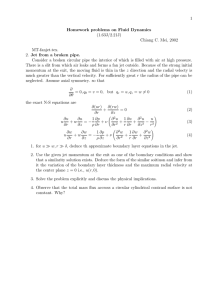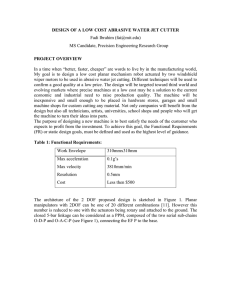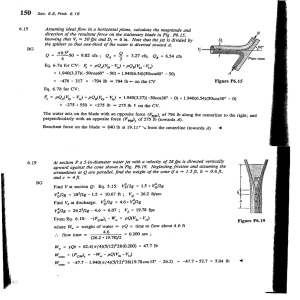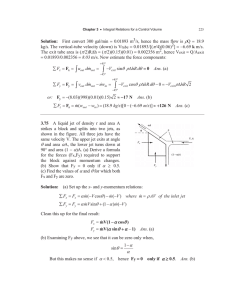3.151 nozzle, exits into the air as a jet, and strikes
advertisement
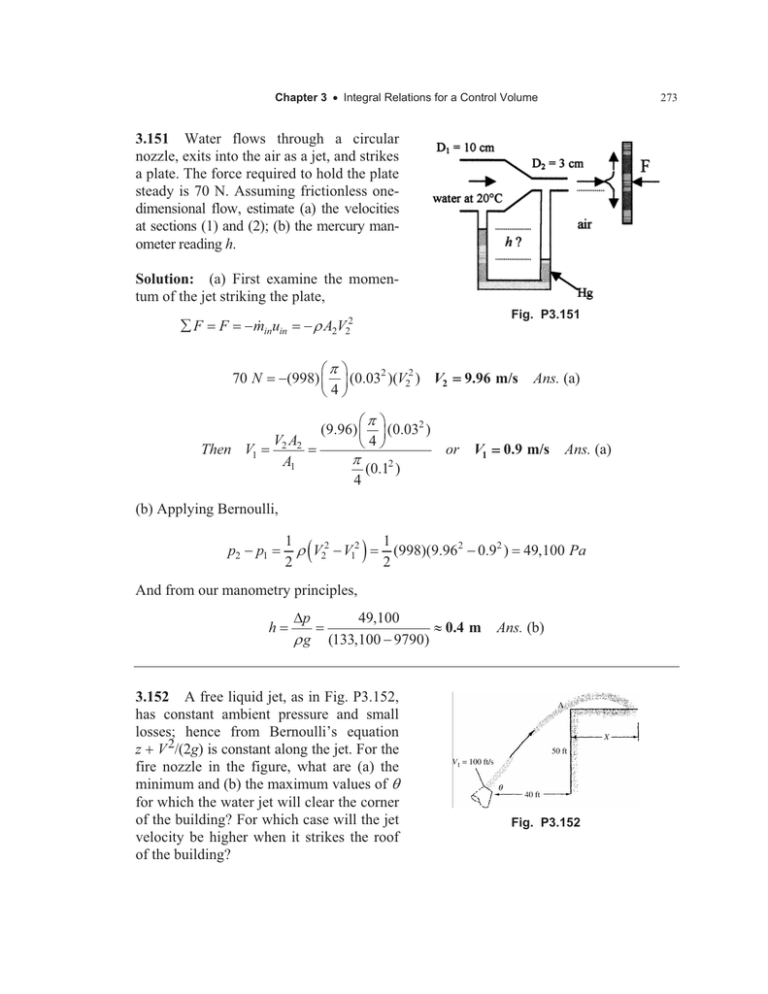
Chapter 3 x Integral Relations for a Control Volume 273 3.151 Water flows through a circular nozzle, exits into the air as a jet, and strikes a plate. The force required to hold the plate steady is 70 N. Assuming frictionless onedimensional flow, estimate (a) the velocities at sections (1) and (2); (b) the mercury manometer reading h. Solution: (a) First examine the momentum of the jet striking the plate, ¦F F §S · (998) ¨ ¸ (0.032 )(V22 ) V2 ©4¹ 70 N Then V1 Fig. P3.151 U A2V22 m inuin 9.96 m/s §S · (9.96) ¨ ¸ (0.032 ) ©4¹ or V1 S 2 (0.1 ) 4 V2 A2 A1 Ans. (a) 0.9 m/s Ans. (a) (b) Applying Bernoulli, 1 U V22 V12 2 p2 p1 1 (998)(9.962 0.92 ) 49,100 Pa 2 And from our manometry principles, h 'p Ug 49,100 | 0.4 m (133,100 9790) 3.152 A free liquid jet, as in Fig. P3.152, has constant ambient pressure and small losses; hence from Bernoulli’s equation z V 2/(2g) is constant along the jet. For the fire nozzle in the figure, what are (a) the minimum and (b) the maximum values of T for which the water jet will clear the corner of the building? For which case will the jet velocity be higher when it strikes the roof of the building? Ans. (b) Fig. P3.152
